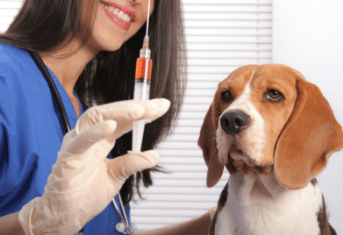Medication Mix-Ups

Medication Mix-Ups
Next week is Poison Prevention Week. According to ASPCA Animal Poison Control, the number one cause of poisoning in pets is prescription and over the counter drugs. The poisoning occurs because pets inadvertently consume either pet or human medications. To help raise awareness of potential sources of pet poisoning, here are some recent issues with medications reported to the veterinarians at The Animal Medical Center.
Name Swap
Most drugs have a brand name like Lasix® or Amoxi-tabs® and a corresponding generic name like furosemide or amoxicillin. I will admit I may use the brand name when speaking with pet owners but write a prescription for the generic medication because the generic brand is typically less expensive, though equally as effective. This dual naming system often creates confusion for the pet owner sometimes resulting in double medicating the pet. Oreo has heart failure and is being treated with Lasix. A second prescription of the same medication from a specialist said furosemide. The owner administered the new medication along with the old medication because she didn’t know the two were the same drug. Fortunately, the error was recognized and no harm came to Oreo.
Rainbow Roulette
Please keep in mind that your veterinarian usually doesn’t see the pills dispensed to your pet. Because I don’t see the pills, your description of “the oblong blue one” doesn’t help me determine the medication prescribed. Also keep in mind that generic medicines can be the same drug, but manufactured in different colors. If a medicine is dispensed and does not look like the last prescription for the same medicine, don’t hesitate to ask the pharmacist or someone at your veterinarian’s office to be sure the correct medication was dispensed.
A Pill for You and a Pill for Me
Last week one of our cat patients was inadvertently given one of her owner’s medications. Both pill bottles were sitting side by side on the counter. Even worse, the medication contained Tylenol® (acetaminophen), a human drug which is very toxic to cats. The owner quickly recognized the problem and successfully induced vomiting, but it could have been a disaster for the cat.
Yes, We Mean Three Times a Day
Three times a day does not mean, put all three pills in the food and hope your pet eats a bite of food containing a pill every eight hours. Don’t count on your pet to count the hours between doses. Give each pill separately at the prescribed intervals to avoid over- or under-dosing your pet.
Words to the Wise
- Ask the prescribing veterinarian what each medication prescribed for your pet is meant to treat. If there are multiple medications to treat the same problem, ask if they are duplicate medications with different names on the labels.
- If you see more than one veterinarian for your pets multiple problems, take all the medication bottles with you to each visit. Be sure each veterinarian knows what the other has prescribed.
- Do not talk about the color of the pills with your veterinarian. We prefer the names of the medication to be read off the bottle. Even badly pronounced drug names are better than a description like “the white one, a little smaller than a dime.”
- To avoid a medication mix-ups, store your medications in a different location than you store Fluffy’s.
- Keep the toll free number of an animal poison hotline handy for an emergency:
– Pet Poison Helpline (800) 213-6680
– ASPCA Animal Poison Control (888) 426-4435

































